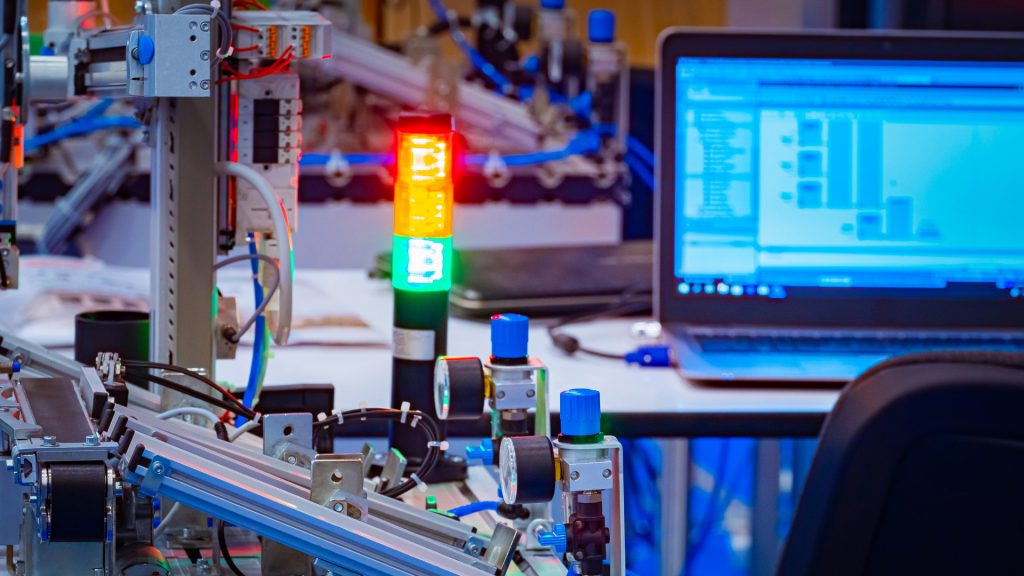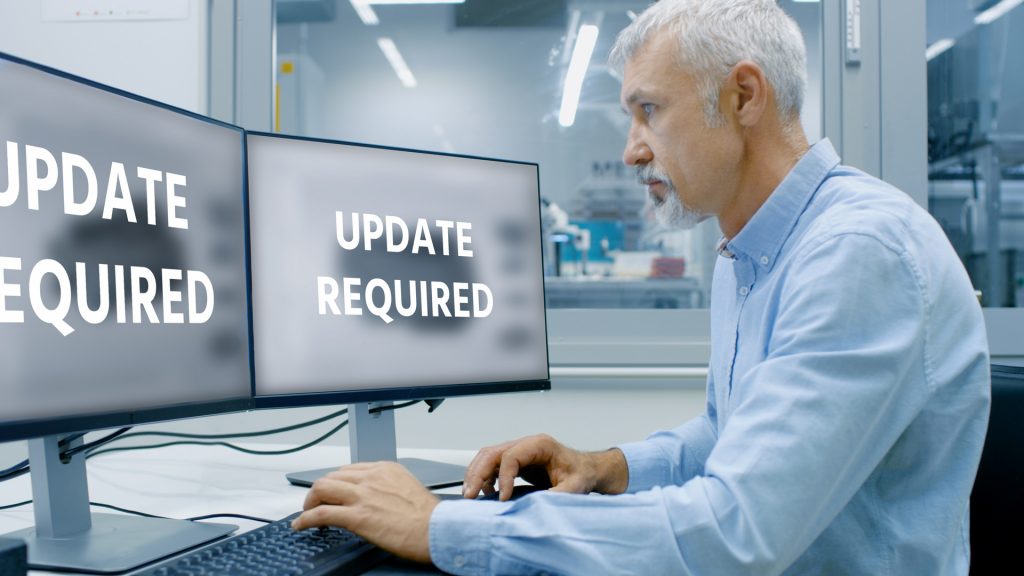
Implementing business-wide change is a process that often comes coupled with a number of complications and headaches for you to manage.
From gathering project requirements and deciding who needs to be involved, right through to getting all departments to buy into the changes afoot.
Below we’ll detail our top 5 tips to help you ensure a successful implementation for your manufacturing ERP.
1: View your ERP system as an investment
The first and most important tip, is that you should view your ERP system as an investment.
While a new ERP system may be able to help fix some of your old problems impacting your manufacturing operation overnight, it’s a long-term investment that will hopefully stay with your business for the next 10-15 years and beyond.
Rather than viewing the system as a piece of software that will fulfil a task, it’s important to view it as an investment that will work in parallel with the company’s strategic objectives and provide you with a clear competitive advantage.
It needs to be a system that is going to continually add value to your business.
The companies we work with who benefit the most from their ERP systems are the ones who see it as the critical platform and a top priority for their business.
They’re continually re-evaluating whether it’s reaching its maximum potential and by doing this they can ensure they’re able to stay ahead of their competition within the manufacturing industry.

2: Gather the project requirements very clearly
Moving to an ERP system because your existing software is running out of support, or has become outdated is a perfectly valid reason for change.
However you shouldn’t be looking to just take your old workflows and processes and implement them into a new system.
You should be looking deeper into your manufacturing operation to see what areas you can improve on now that you have this fantastic opportunity for change.
We often tell our customers that it can’t be ‘the same, but better’.
If you want your systems to be better, then things are going to have to change.
This makes it vital to engage with all the different departments within your organisation, find out what their individual requirements are, communicate the changes that will occur and build adoption and engagement plans for the various teams that will be affected by the change.
“ERP adoption increases by an average of 25% when there’s a solid business case defined and bought into by teams and employees.” – IQMS
An idea we’ve seen very well is to produce a video, detailing why this change is happening, what it means for the business and how it will affect the various departments.
Some businesses choose to create a ‘post box’, giving employees to post questions or concerns anonymously to help them gather feedback and provide answers to things which employees see as a potential problem.
Another popular option is what’s referred to as a ‘town hall meeting’, where the entire team gathers around and discusses the changes to the business.
Providing employees with an opportunity for two way feedback is a great way to make them feel involved and engaged throughout discovery stages of the project.
It allows your team to create and own the vision of a more connected workforce as you look at ways to implement this significant business change.
Inevitably this means that when the implementation stage arrives, you have a team that is already engaged and prepared for the changes that are afoot for the business.
3: Prioritise the ‘big wins’
There are two main approaches to implementing a new ERP in your business. There’s a phased/modular approach, and there’s what we call ‘the big-bang’ method.
A phased/modular approach is where you would look to implement your ERP one stage at a time, gradually introducing the system to the business one stage at a time, whether that be based on breaking it down by module, business unit, geographical area or business priority.
The ‘big bang’ approach on the other hand, is where everyone in your company will start using the system on the same day, taking all of the various modules live at the same time.
Regardless of whether you’re going to use a phased/modular approach or to use the ‘big-bang’ approach, it’s crucial to prioritise areas that either need the most attention, or will provide the highest return on investment.
By focusing on these areas first in the implementation stage, it’s easy to demonstrate the return on investment that your ERP is providing.
If people can see the immediate benefits the system is bringing then the investment is seen as justified and ‘buy in’ accelerated throughout the business.
If your Board of Directors are happy with the results that are being provided they will be happy to continue to invest in the system, which then provides the business with further gains. And then as this process repeats, it forms a nice positive, continuous cycle of:
Investment > Gains > Returns.

4: Free up resources to work on your manufacturing ERP implementation
An ERP implementation is a big, critical and strategic project and so it’s important for your business to free up all of the resources that are required to ensure it’s delivered effectively.
With some projects it’s very reasonable to assume you can free up just one person to work through the discovery process, gather all the information required and feed this back into the business.
However we cannot stress enough the importance of gathering all the major stakeholders and all your heads of departments to work on this implementation project together.
We would recommend appointing a member of your Senior Management team to lead the ERP implementation. Someone who takes accountability for the progress, and provides leadership to the department heads working on the project.
With any complex business change, one of the most common requests is that a smooth transition is ensured.
By not freeing up the relevant resources to work on the project,it almost guarantees that the implementation stage will be a difficult and stressful time for your business.
An ERP is designed to bring all the different functions of your business together in a single system.
By freeing up the heads of the relevant departments to engage in this stage of the process ensures their specific departments requirements can be considered when implementing your ERP.
This may mean bringing in temporary workers, or paying for overtime, but we can assure you that in the long run it will yield a much better result for your business than not freeing up their time to engage in the project.
5: Don’t stop investing after your ERP goes live
Our fifth and final tip for ensuring a successful implementation of your manufacturing ERP is to not stop investing in your ERP software the second it goes live.
When you adopt an ERP, you’re investing in a system that is potentially going to stay with your business for the long term.
Therefore it’s essential to not just set it up and forget about it.
Have a plan in place to update your system and to invest in the skills of your employees who interact with it.
When you work with a partner to implement your ERP for you, the chances are that you will have signed up to a software support plan.
Make sure you make use of this support and advice that is available as it helps to build the internal knowledge base of your team and grow their skills in relation to the ERP software.
Updating your software, whenever updates become available, is vitally important.
If you miss one update then that might be fine, but if you miss the next update, or the one after that, then you could now end up using a system that is five years out of date and no longer supported by the help that is available.
By keeping your system updated you’re protecting the longevity of it playing a key role in giving your business a competitive advantage.

We provide our ERP customers with an incredibly useful portal, which they can access to see the latest developments within DELMIAWORKS.
This allows them to consider how they may be able to implement these updates to improve on the processes and workflows that they already have in place.
We’re also very flexible with the approach we provide, so if it’s more efficient for you to instruct us to make changes to your system, we’re more than happy to do so.
But if you’d prefer your team to grow it’s knowledge base and learn new skills, we can also provide you with the relevant training to allow you to implement change yourselves.
Knowing how to ensure a successful implementation of your manufacturing ERP is just as important as making sure that you choose the ERP that’s right for your business.
Which ERP software is best for manufacturing?
We highly recommend DELMIAWORKS as the best manufacturing ERP for all of our customers working in discrete, repetitive, and batch process manufacturing businesses.
It’s an especially useful system for companies working across the automotive, aerospace, medical/pharmaceutical, plastics and general manufacturing industries.
DELMIAWORKS was built from the ground up by manufacturers, for manufacturers.
Rather than being an ERP system which is configured to work for the manufacturing industry, it is a manufacturing system which has been configured to include additional ERP elements such as sales, finance and customer service.
We recently published articles to help you decide if DELMIAWORKS is right for your business, and if it is, why Proximity is the right team to help you implement it.
If you’d like us to help you select the right ERP for your manufacturing business, you can talk to our team today.
TALK TO US >
Posted by Rob on 1st March 2021.

